IMSML Website Article 15/2023: Resolution MSC.527(106) - International Code for the Safety of Ships Carrying Industrial Personnel (IP Code), Part 5 of 6 - PART V of the IP Code - ADDITIONAL REGULATIONS FOR CRAFT CERTIFIED IN ACCORDANCE WITH SOLAS CHAPTER X
This article is Part 5 of 6 of a series of articles on the IP Code, PART V which deals specifically with Additional Regulations for Craft Certified in Accordance with SOLAS Chapter X.
Regulation 1 - General
High-speed cargo craft can carry only a maximum of 60 persons, see Regulation 1.1. Such craft will have to be certified in accordance with Chapter X of SOLAS, see Regulation 1.1. Such high speed craft will also have to meet the requirements of IMO’s High Speed Craft Code (ie the HSC Code). If the requirements are met, such high speed craft are taken to have met the goals and functional requirements of Paragraphs II/3 to II/9, see Regulation 1.3.
When industrial personnel are carried on a high-speed craft, it is not considered a ‘transit voyage’, as defined in the HSC Code, 1.9.1.1. Therefore a permit to carry out operation is still required, see Regulation 1.4.
Whenever the term ‘passenger’ is used as part of the requirements stipulated in the HSC Code, it defined as ‘persons on board other than crew’, see Regulation 1.5.
Regulation 2 - Subdivision and Stability
The functional requirements in Paragraph II/3.2 have to be met. This means complying with Chapter 2, Part B of the HSC Code. The exception is 2.13.2 and 2.14 which could apply in lieu of Chapter 2, Part C of the HSC Code, see Regulation 2.1.
When Chapter 2 of the HSC Code is applicable, the term ‘passenger’ means ‘persons of board other than crew’. The regulation assumes that the ass of each person is 90kg (instead of 75kg), see Regulation 2.2.
Regulation 3 - Machinery Installations
This part contains stipulations on meeting the functional requirements in Paragraph II/4.2. Provisions in Chapter 10, Part B of the HSC Code are applicable to Category A passenger craft in lieu of Chapter 10, Part C of the HSC Code.
Regulation 4 - Electrical Installations
This Regulation merely applies the provisions of the HSC Code set out in Paragraph II/5.2, 12.7.10.
Regulation 5 - Periodically unattended machinery spaces, and Regulation 6 - Fire safety, contain no provisions.
Regulation 7 - Life-saving Appliances and Arrangements
This provisions sets out the mechanism for compliance requirements set out in Paragraph II/8.2. First, Para 4.2.3 of the HSC Code shall apply, see Regulation 7.1. Second, Para 8.4.3 of the HSC Code shall apply, in particular, ‘passenger spaces’ shall be read as ‘IP area’, see Regulation 7.2. Third, when determining the number of infant or child life jackets, this has to be calculated solely based on the number of passengers on board, see Regulation 7.3.
Regulation 8 - Dangerous Goods
Bringing dangerous goods on board is a restricted process. Such goods can only be brought on board specifically for the purpose of their role of the craft. Further, the consent of the master of the craft must be obtained. When transporting the dangerous cargo, it must comply with Chapter 7, Part D of the HSC Code, see Regulation 8.1.
When carrying IP, the functional requirements of Paragraph II/9.2 that must be met are as follows:
[1] Clearly marking areas and spaces on the craft where IP are not permitted to enter, see Regulation 8.2.1;
[2] The cargo area cannot be used for personnel transfer. Any arrangements for personnel transfer must be made outside this area, see Regulation 8.2.2;
[3] Access for personnel transfer, shall be made outside the cargo area, as far as practicable, see Regulation 8.2.3;
[4] The process of loading and unloading of cargo, cannot take place at the same time as embarkation or personnel transfer, see Regulation 8.2.4.
Thank you for reading IMSML Website Article 15/2023
Stay tuned for the next IMSML Website Article 16/2023: Resolution MSC.527(106) - International Code for the Safety of Ships Carrying Industrial Personnel (IP Code), Part 6 of 6 - APPENDIX of the IP Code
Signing-off for today,
Dr Irwin Ooi Ui Joo, LL.B(Hons.)(Glamorgan); LL.M (Cardiff); Ph.D (Cardiff); CMILT
Professor of Maritime and Transport Law
Head of the Centre for Advocacy and Dispute Resolution
Faculty of Law
Universiti Teknologi MARA Shah Alam
Selangor, Malaysia
Friday, 8 September 2023
Note that I am the corresponding author for the IMSML Website Articles. My official email address is: uijoo310@uitm.edu.my
